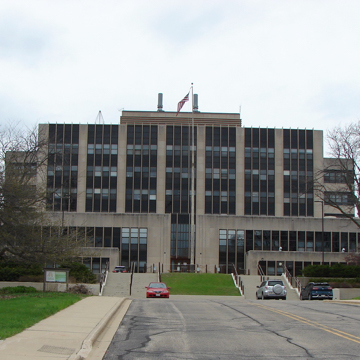The nationally noted Chicago firm designed this building in an industrial modern style to express its “clearcut character in the practical application of scientific methods,” according to a United States Department of Agriculture (USDA) annual report. The six-story building rises in a series of five setbacks. The first two stories have a pronounced horizontal emphasis, thanks to the long band of windows and the walls that extend from both sides of the entrance like the wings of a biplane. The stepped-back limestone piers flanking the entrance accentuate the effect. The third through fifth stories assume a much more vertical orientation. Here, windows are grouped into vertical banks separated by limestone piers, which mask the structural columns, and cypress-wood fins. The fins shade the windows to reduce solar gain in summer. Stepped-back blocks on each side of this central section features windows that turn around the corners.
The Forest Products Laboratory, like the U.S. Forest Service itself, has its origins in the ideas of Gifford Pinchot, a major figure in natural resource conservation. In the early twentieth century, fearing that the nation’s forests were being recklessly and wastefully depleted, Pinchot maintained that scientific experts like himself should manage forests like an agricultural crop to guarantee the efficiency and long-term sustainability of timber production. As the Forest Service’s first chief, he sought uses for wood byproducts such as bark and sawdust that had formerly gone to waste. In 1908, after a keen competition, the Forest Service selected the University of Wisconsin–Madison as the site for its Forest Products Laboratory. The lab quickly outgrew its first facility at 1509 University Avenue, making necessary the construction of this building. Here, researchers developed such products as particle board, glued laminated wood, and the laminated arch, all important to the construction industries. They also contributed to the understanding of wood chemistry and genetics, pulp paper processes, and the design of fiberboard boxes and wood crates.


